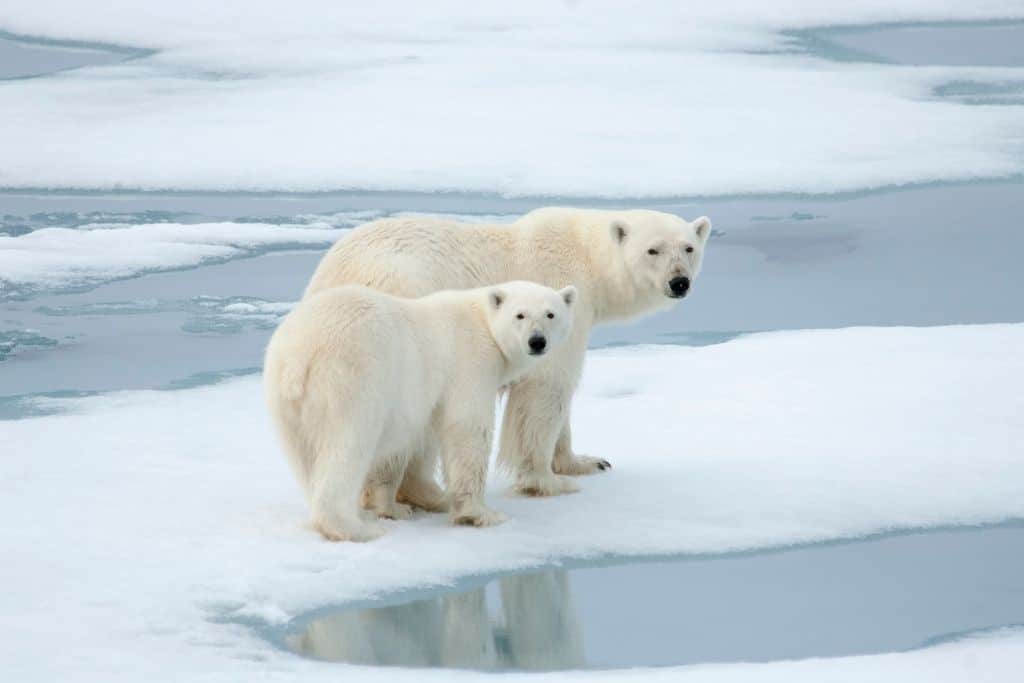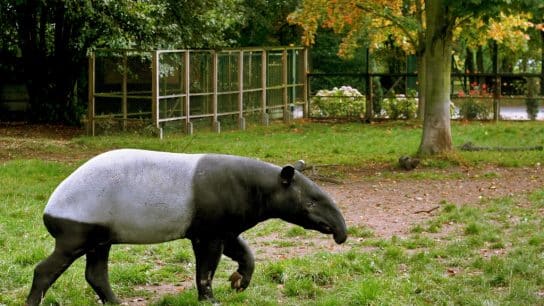Polar bears, as their name suggests, are animals that are endemic to the North Pole. They are majestic animals on the top of the food chain, which have long adapted to survive the extreme cold in the Arctic Circle. However, these animals are now being reduced to nothing but mere skins and bones – and were the earliest symbols of the oncoming impacts of climate change. Due to global warming and the rapid melting of Arctic ice, polar bears are dying quickly, and if nothing is done rapidly enough, they may be gone before we even know it. Here’s everything you need to know about this majestic, yet threatened, animal.
—
Family: Ursidae
Genus: Ursus
ICUN status: vulnerable
Population: 22,000-31,000
Location: Arctic Ocean (Alaska, Canada, Russia, Greenland, and Norway)
Species: Ursus maritimus
Weight: 800-1,300 pounds (males), 300-700 (females)
Length: 6-9 feet
1. Diet
Polar bears’ diet consists mainly of seals as they require large amounts of fat to survive the cold climate. They can eat up to 10 to 20% of their entire body weight thanks to their giant stomachs; their bodies can use about 97% of the fat they eat. The massive mammal eats at least 50 seals a year, but because of the annual melting patterns of the sea ice, they can hunt only from November to July. When there are no seals available, polar bears opt to catch walruses and beluga whales.
2. Social Behaviour
Polar bears are talented swimmers for hunting and travelling long distances, and they are able to sustain a pace of six miles per hour by paddling with their front paws and holding their hind legs flat like a rudder. They also have a thick layer of body fat and a water-repellent coat that insulates them from the cold air and water.
Polar bears rely heavily on sea ice for many activities such as travelling, hunting, resting, mating and, in some areas, maternal dens.
An interesting fact is that most polar bears sleep between seven to eight hours at a stretch and often take naps just about anywhere, any time, and especially after feeding; making humans and polar bears rather similar when it comes to sleeping patterns.

3. Critical Species
Polar bears are at the top of the food chain and play an important role in keeping the biological populations in balance, which is a critical component to a functioning ecosystem. The species eat almost exclusively on seals, but if they can’t hunt for this food source due to lack of a sturdy ice platform or pure exhaustion, they will move on to other animals.
This could threaten the existence of other Arctic species, such as the Arctic fox or the walrus. Aside from the new, increased threat of being hunted as prey by polar bears, these Arctic animals will also have to compete for food resources with their predators. Scavengers like the Arctic fox and Arctic birds like the snowy owl depend on big kills from polar bears – feeding from the leftover carcasses – as sources for food as well. If polar bears are unable to kill seals, another food source for the wildlife will be cut out.
Without polar bears to control the seals’ population, the number of seals will subsequently increase, threatening the population of crustaceans and fish in the region, which is an important food source not only for seals, but also for other Arctic wildlife as well as local human populations.
4. Threats
Due to climate change, the Arctic is heating up twice as fast as anywhere else on the planet, shrinking the Arctic sea ice cover by 14% per decade. Compared to the median sea ice cover recorded between 1981-2010, we have lost about 770,000 square miles between 2011 to 2021, an area larger than Alaska and California combined.
As polar bears rely heavily on ice to survive, this leads to a drastic decrease in the number of the species. In fact, a recent reassessment shows that there is a high probability that the global polar bear population will decline by more than 30% over the next 35 to 40 years.
Polar bears rely on sea ice to hunt seals, rest and breed. And when ice melts during summer and autumn, they come ashore and rely on fat storage until the ice refreezes so they can go back out to hunt. Due to the loss of sea ice, polar bears must travel longer distances to stay with the rapidly receding ice, and there is not enough food supplies during winter. To make things worse, sea ice now melts earlier in the spring and forms later in the autumn, meaning that they will starve even longer during these months. As the bear spends longer periods without food, their health declines. For every week earlier that the ice breaks up in Hudson Bay, bears come ashore roughly 22 pounds lighter and in poorer condition.
Even those who survive the starvation will suffer from heavy malnutrition, especially females with cubs. Unhealthy bears can lead to lower reproduction rates and extinction in certain locations. Scientists have found the main cause of death for cubs to be either lack of food or lack of fat on nursing mothers.
Along with sea ice loss, other potential threats to the species include pollution, resource exploration and habitat change due to development. Oil development in the Arctic, for example, poses a wide range of threats, from oil spills to increased human-bear interaction and conflicts.

5. Conservation Efforts
To protect polar bears, there have been numerous efforts taken up by different organisations. This includes the World Wide Fund for Nature (WWF), which has been advocating for the establishment of protected areas in the Arctic, supporting Inuit-led management and conducting research to advance understanding of the Last Ice Area – where summer sea ice will persist the longest in the face of climate change, providing refuge for ice-dependent species.
Other than the WWF, the Polar Bear Specialist Group is also working to protect polar bears by funding the Hubbs-SeaWorld research, which aims to conserve and renew wildlife. There is also a special conservation group working within the International Union for Conservation of Nature (IUCN) with a goal of coordinating, synthesising, and distributing scientific information necessary to guide the long-term viability of polar bears and their habitats.
Polar Bears International is also dedicated to the preservation of polar bears, conducting research and raising awareness of the plight of polar bears through educational programmes and by sponsoring programmes such as Save Our Sea Ice to facilitate efforts to reduce carbon, which will, in turn, save the polar bear’s habitat.
What Can We do?
There are many ways in which we can help save polar bears even when we are miles away from the Arctic Circle. We can donate money and even volunteer with any polar bear conservation organisations highlighted above. Another way to help polar bears is by helping fight climate change.
Burning fossil fuels is the leading cause of global warming and the melting of sea ice. One easy way to reduce fossil fuel consumption is making our daily commute a little greener. Simply carpooling or biking to work is already a small step in saving polar bears from extinction. We can also reduce our consumption of animal products and buy local produce when possible to reduce the emissions of greenhouse gas.
If you enjoyed this article about endangered polar bears, you might also like: Red Pandas: Endangered Animals Spotlight














